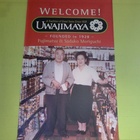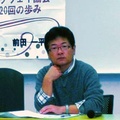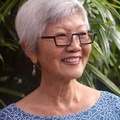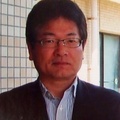Located about 50 kilometers south of Seattle, the coastal city of Tacoma developed early on as a trading hub and industrial city. In 1907, the population reached 90,000. Moriguchi Fujimatsu opened his shop in 1928, but the number of Japanese people was at its peak in the 1920s, when it is said that there were about 1,600 Japanese residing in the city.
Going back to 1885, it is said that Japanese people first left their mark in Tacoma, when a man named Hifumi Kumamoto established a company in April 1898 to recruit Japanese workers for the Northern Pacific Railroad, employing 800 workers. The number of Japanese workers in the lumber industry near Tacoma also increased, and Japanese people began to actively cultivate vegetables and fruit in the surrounding area.
The town of Fife, adjacent to Tacoma, had many Japanese farmers, especially those from Ehime Prefecture, and was nicknamed "Ehime Village." This was largely due to the efforts of Nishii Kyuhachi, a native of Mukai-nada, Nishiuwa District, Ehime Prefecture (now Yawatahama City), who made a name for himself in America. He called on people from his hometown who wanted to travel there to help them.
Thinking about returning to Japan
In Tacoma, a Japanese town was born, and various stores and buildings such as restaurants, hotels, barber shops, and laundries were built, and the town flourished. Among them, Uwajimaya opened on Broadway. As the number of Japanese people increased, the demand for Japanese food and ingredients increased. In addition to retailing, Fujimatsu's store continued to make and sell satsumaage and other foods to fill the stomachs of the Japanese people in the area.
In January 1933, Fujimatsu married Sadako Tsutakawa. Later that year, their first son, Kenzo, was born, followed in 1935 by their first daughter, Suwako, and in 1936 by their second son, Tomio. As their busy lives continued, in 1937 they moved their store to a location a short distance away on the same Broadway street, and in 1939 their third son, Akira, was born.

At that time, the Japanese town occupied an area of downtown Tacoma near the sea and the train station. The town was laid out like a grid, with each block confined to four or five blocks north to south and five or six blocks east to west. There were many stores and offices, including hotels, laundries, Japanese newspapers, cafes, and restaurants, and among them was Uwajimaya, located near the corner of Broadway and 15th Street.
The name Uwajimaya comes from Uwajima in Ehime, where Fujimatsu trained as a young man, but that wasn't the only reason he chose the name. He considered naming the store after his own surname, such as "Moriguchiya" or "Moriguchi Shoten," but Fujimatsu thought it would be bad if the store had the Moriguchi name if he failed in business or if he were to sell it.
He may have been half joking, but in any case, it seems he had something in mind for when he returned to Japan.
Buy fresh fish and make fish cakes
Here is a summary of what the store was like and how business was conducted at the time, based on the memories of the second son, Tomio:
The restaurant was inside a building about 20 feet wide and 60 feet deep, with a mezzanine floor. The family ate and slept at the restaurant, though they lived separately a few blocks away.
Fujimatsu made fishcakes, which are called fishcakes in America, like kamaboko and satsumaage every day at this shop. Most of the fish he used were caught in the sea and purchased from a fish wholesaler. The best fish was Lingcod. He crushed it in a grinder and kneaded it with salt, a little sugar, flour, starch, etc.
To make kamaboko, this was ground into a paste and placed in a mold, but for satsumaage, vegetables such as burdock were mixed in. There was also a mixture of egg and paste (probably Datemaki), but it is unclear whether they made Jakoten.
At the time, fresh fish was cheap, but as prices later rose, they began to use frozen fish as an ingredient, and in later years they also began to use frozen "processed fish paste."
They sold homemade products such as kamaboko (fish cake) and satsumaage (fried fish cakes), as well as miso paste, rice, bread, milk, lettuce, tomatoes, carrots, burdock, and other vegetables. They also sold cigarettes and Coca-Cola. Most of the customers were Japanese or Japanese-American.
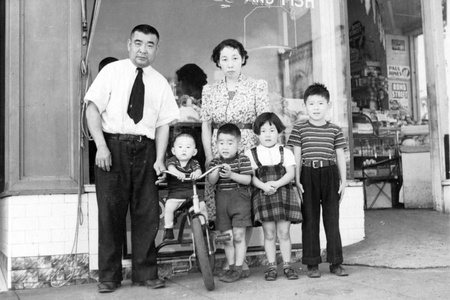
Uwajimaya
Fujimatsu, Sadako and the others dressed in typical American clothing of the time, but Sadako always looked nice and groomed. Fujimatsu occasionally attended weddings and funerals of fellow Americans in a suit and tie. Fujimatsu spoke to the children in Japanese.
"I think it was because my father wasn't good at English and he wanted to bring his family back to Japan someday," Tomio says. Meanwhile, his mother, Sadako, spoke to her children in English mixed with Japanese.
There was a Japanese temple in the area (Tacoma Buddhist Church), and the children would go to picnics and events hosted by the temple with their second-generation Japanese friends. They had strong ties with the community.
(Titles omitted)
reference:
American Regional Studies No. 5 March 28, 2015 "Article" "Cosmopolitanism" of Japanese Immigrants Yoko Murakawa, Professor, Faculty of International Studies, Keiai University.
© 2018 Ryusuke Kawai


